Keywords: Post-Traumatic growth.
The healing process of a client is auto-directive. It is not the therapist who leads the therapeutic process, but the inherent intelligence of the client.
It is the therapist, however, who helps to reestablish boundaries where they have been breached, who assists in containing feelings in general, and the strongly related emotions of anger, fear, and sadness in particular.
Post-Traumatic Stress dramatically breaches boundaries of healthy containment and processing of emotion. It derails feeling, emotion, and sensation to such an extent that it becomes destructive, rather than constructive.
PTSD Symptoms, Dissociation, and Post-Traumatic Growth
When the overflow of emotion becomes consistently destructive, it will provoke the usual coping mechanisms to deal with the overwhelming mental storm. Coping mechanisms can be excessive sports, work, or activities; the need for continuous positive affirmation by self or others; overuse of alcohol or other substances, and obsessive or excessive emotional behavior.
Post-Traumatic Stress dramatically breaches boundaries of healthy containment and processing of emotion. It derails feeling, emotion, and sensation to such an extent that it becomes destructive, rather than constructive.
The overwhelming emotion and the habituated coping system become codependent, causing them to rotate cyclically; additionally, these are bound by feelings of shame, blame, guilt, self-pity, and self-reproach.
Ongoing Post-Traumatic Stress is destructive and the suffering continues to be repetitive; however, herein also lies the potential of breaking the cycle, growing, and resolving trauma. A reenacted traumatic pattern can either reinforce itself, or be turned into a constructive force for building strength.
An Insiders look into Childhood Abuse and Neglect
To put this as an example:
Peter suffered neglect and rejection throughout childhood. As an adult, he has trouble moving forward in life and in relationships. He hates his family, and blames them for his anger and incompetence, and loathes himself. His anger is kept alive by blaming, and his sadness collapses in on his sense of self as self-pity, thereby keeping it ongoing.
Even though he suffers from his current situation, he is unable to put any distance between himself and his family or make a change for the better in his working situation. His internal state is clearly reenacted in his outward life.
In this example, which deals with developmental trauma issues, you can see the cyclical locking in of responses and reenactment. He does not want to feel angry nor to feel sorry for himself, but at the same time, he can’t let go of the blaming of his family, and the anger that goes with it, which would allow him to move on in life. It is a pattern that binds him, repeats itself, and helps him to temporarily manage and cope.
Starting the Process of Post-Traumatic Growth
In our sessions, we addressed first the disconnection of feeling anything, towards connecting where he starts to feel emotion, body-sensation, and feeling overwhelmed. Whenever the story takes over: “I am not good enough”, “I am a loser”, “I am never going to move out of this”, I intervene and move his attention to feeling his body sensations, thereby breaking the reinforcement of destructive patterns and moving into a constructive pathway of owning, containing, processing and building resilience. Educating yourself about how patterns and emotions are kept in place through guilt, blame, shame, self-pity, and self-reproach, helps you to give less importance to thoughts of that nature.
Once he has managed to increase his level of containment and reduce his resistance to staying with anger as blaming, and sadness as self-pity, another pattern starts to emerge. There is a need; a demand to be with anger, with sadness, and to project either outward onto his family or inward onto himself. To be without these coping emotions and thoughts would be to feel utterly alone, a result of his seemingly permanent feelings of having been rejected; that’s where the essential, core pain is located, upon which other patterns are constantly building in a way that reinforces them.
The continuous sense of rejection and neglect has prevented him from feeling nurtured, and from developing his sense of self and integrity, making him dependent on the affirmation of his family, his work colleagues, and others. Even though he is not happy with the situation, he’s in bondage to it.
Dealing with Childhood Trauma and Working towards Post-Traumatic Growth
It is through the therapist-client relationship that awareness and attention can be brought to the pain of rejection and loneliness, and to nurture that obscure, lost part of yourself. It is bringing awareness to that pain, that lack of bonding and connection from early childhood, that the process of healing begins; the process of lessening emotional dependence on others and loving oneself.
When these core insights are integrated, outward circumstances will start to adjust accordingly: being able to set clear boundaries, maintaining more distance from the family, being more self-reliant and less dependent, changing towards work that is more fulfilling, being more selective in choosing a new partner based on new values, and so on.
Developmental issues are common among all of us to greater and lesser degrees. In the current understanding of trauma, they are referred to as “insecure attachment bonds”. They have far-reaching consequences in terms of how we interact with ourselves and others. Healing these deeply held patterns can help you to open up to how you want to live and to express your full potential.
How is Post-Traumatic growth for you? Leave your comments below.
